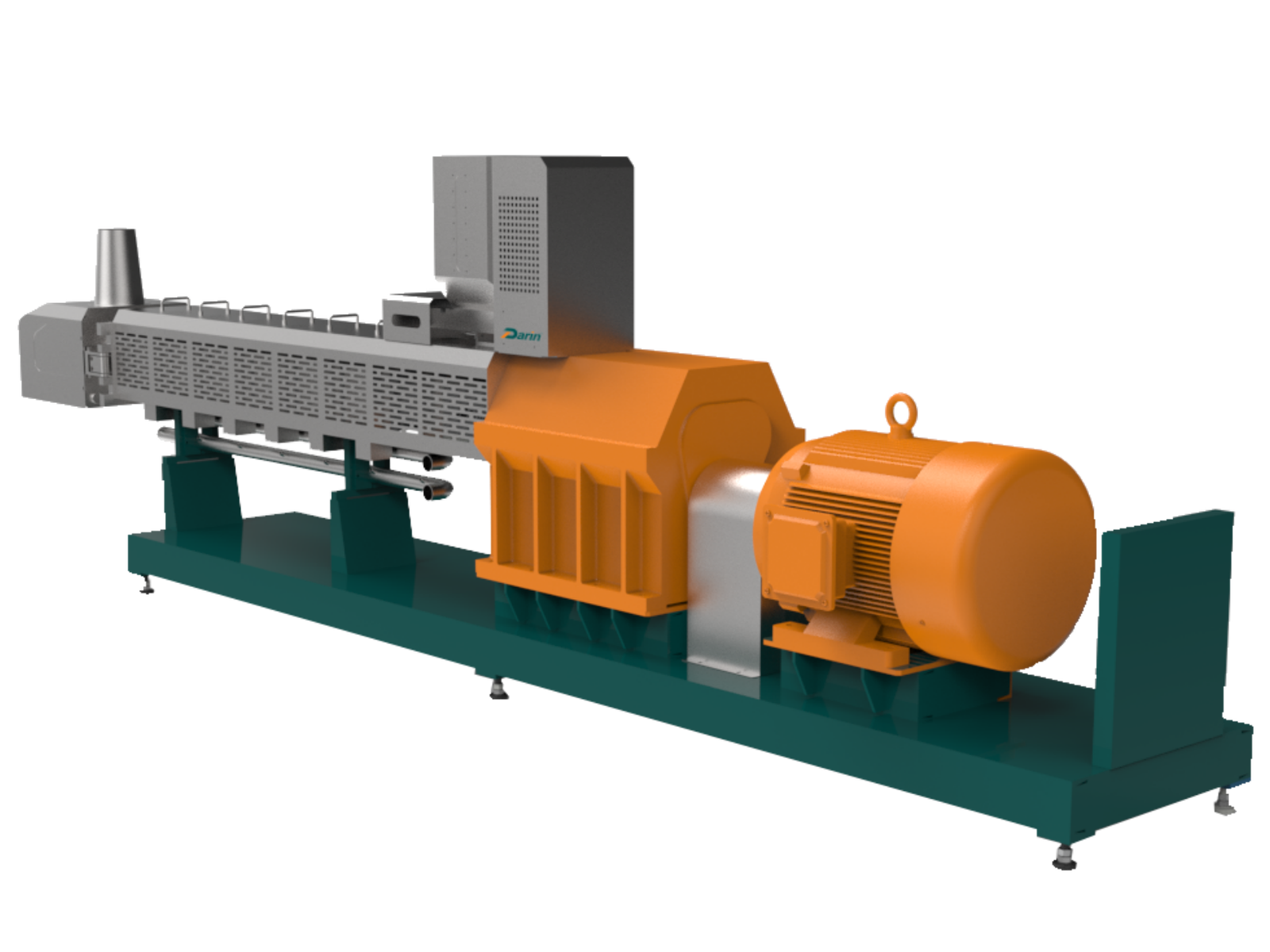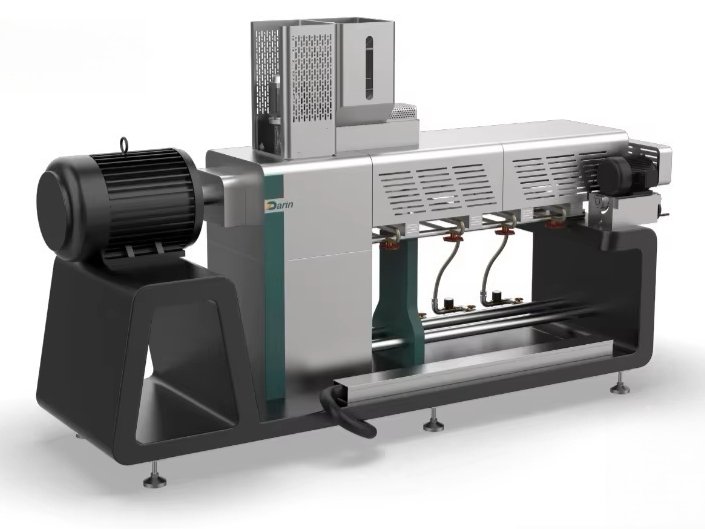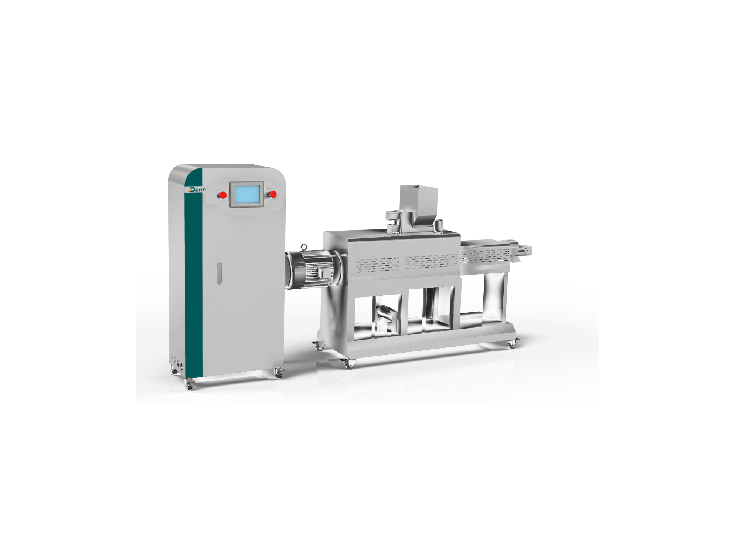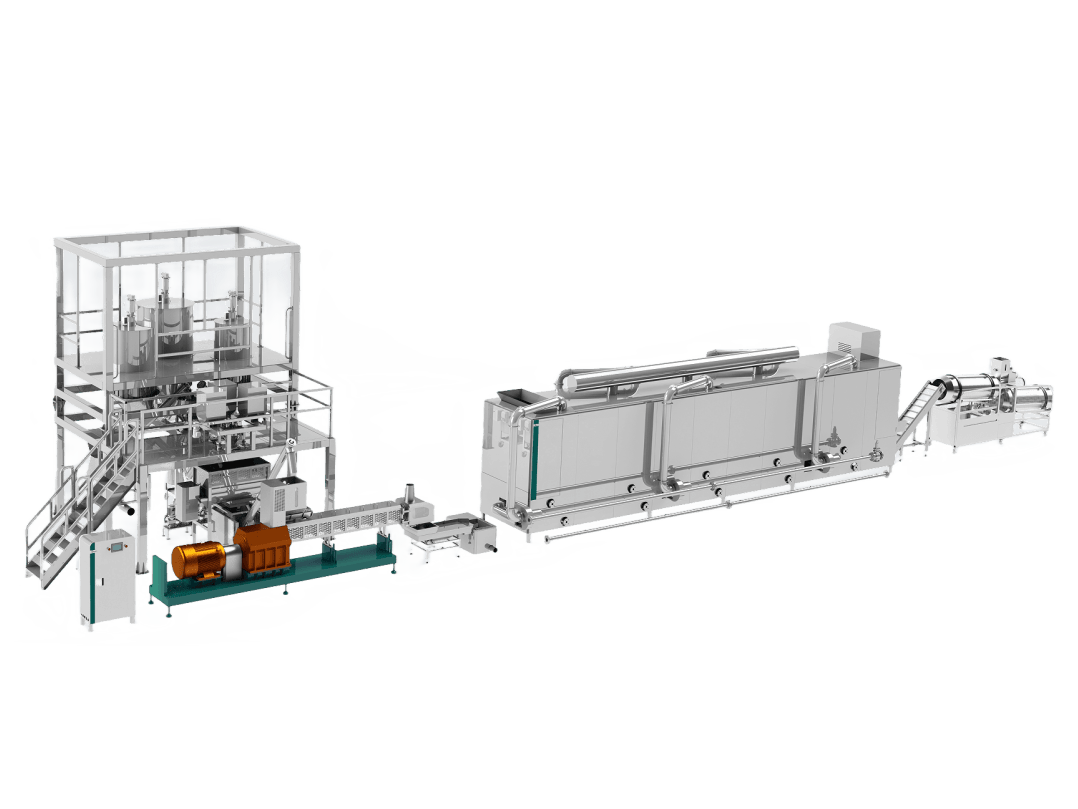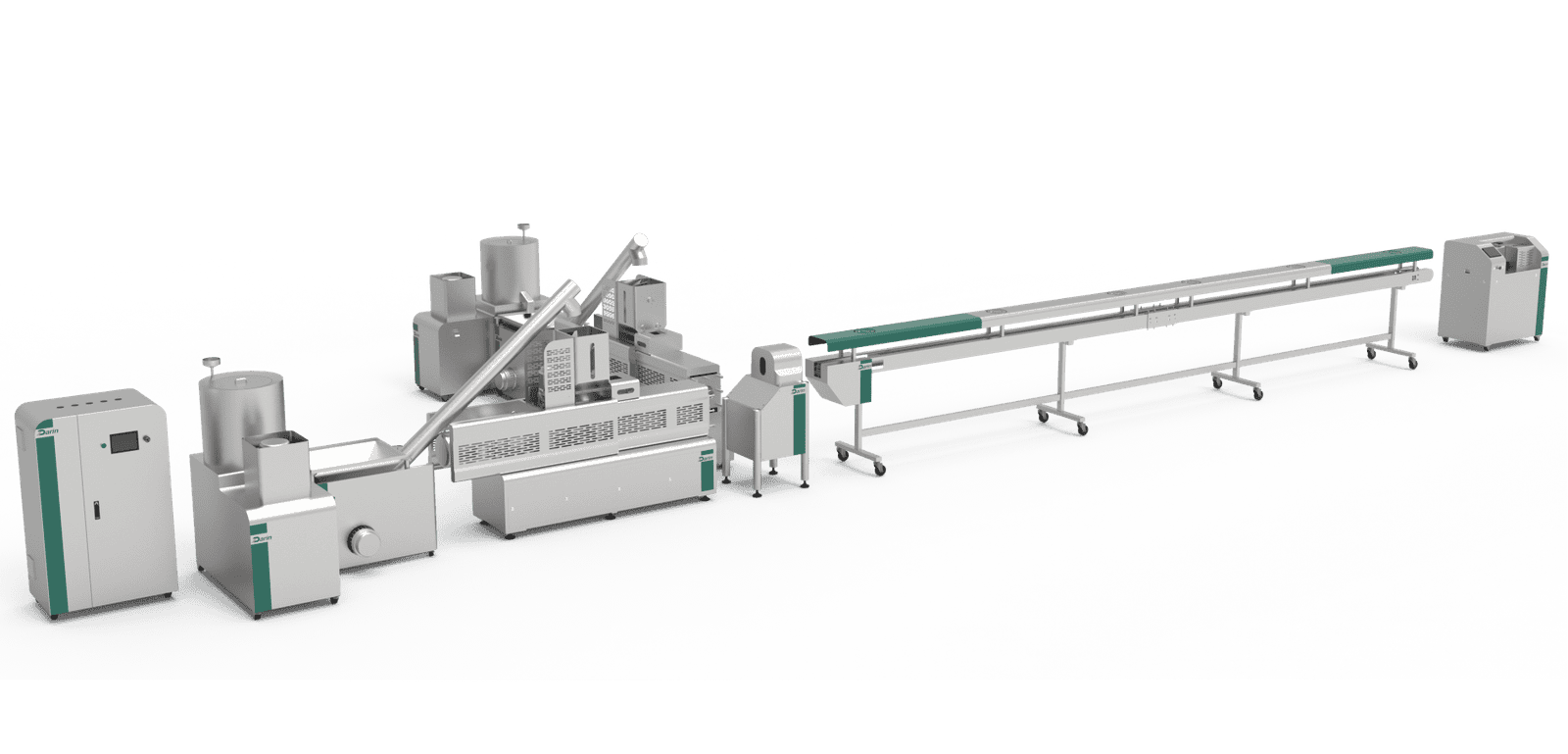
In the modern food processing industry, especially in the manufacturing of snacks, cereals, pet foods, meat analogues, and fortified blends, extrusion plays a vital role. However, confusion often arises when deciding between a Одношнековый и а двухшнековый extruder. Making the wrong decision can lead to poor product quality, inefficient energy use, inconsistent textures, or limited ingredient flexibility. Understanding the fundamental differences between these machines ensures the final product meets precise formulation and performance standards. In this article, you’ll learn exactly what sets these extruders apart, and how to choose the right one for your food production goals.
A single-screw food extruder uses one rotating screw to cook and shape food products and is ideal for consistent, low-viscosity formulations, while a twin-screw food extruder uses two intermeshing or non-intermeshing screws that provide superior mixing, ingredient flexibility, and control over texture, making it more suitable for complex recipes and high-moisture applications.
If you're involved in producing extruded foods and want consistent shape, improved nutritional incorporation, and precise process control, it's essential to understand how these two technologies perform under different processing conditions. Let's dive into the mechanical, functional, and economic differences that truly matter.
\
Twin-screw extruders offer better control over ingredient mixing and texture than single-screw extruders in food processing.Правда
Twin-screw extruders allow multiple feed streams, venting options, and higher shear capabilities, enabling better dispersion of nutrients and texture control.
Structural Comparison of Food Extruders
| Характеристика | Single-Screw Food Extruder | Twin-Screw Food Extruder |
|---|---|---|
| Конфигурация винтов | Один вращающийся винт | Two screws (co-rotating or counter-rotating) |
| Material Conveying Method | Drag flow | Drag + pressure flow |
| Смешивание ингредиентов | Основные | Advanced (distributive and dispersive) |
| Feed Flexibility | Ограниченный | High (solids, liquids, gases simultaneously) |
| Residence Time Distribution | Broad (less uniform) | Narrow (more uniform) |
| Degassing or Devolatilization | Not efficient | Excellent with venting capability |
| Die Pressure and Shear Control | От низкого до умеренного | High and adjustable |
| Согласованность результатов | Умеренный | Высокий |
Одношнековые экструдеры typically have a simpler design. Material enters, is compressed and melted by friction and heat, then pushed through a die. These are ideal for direct expanded snacks or pasta where the recipe does not vary significantly.
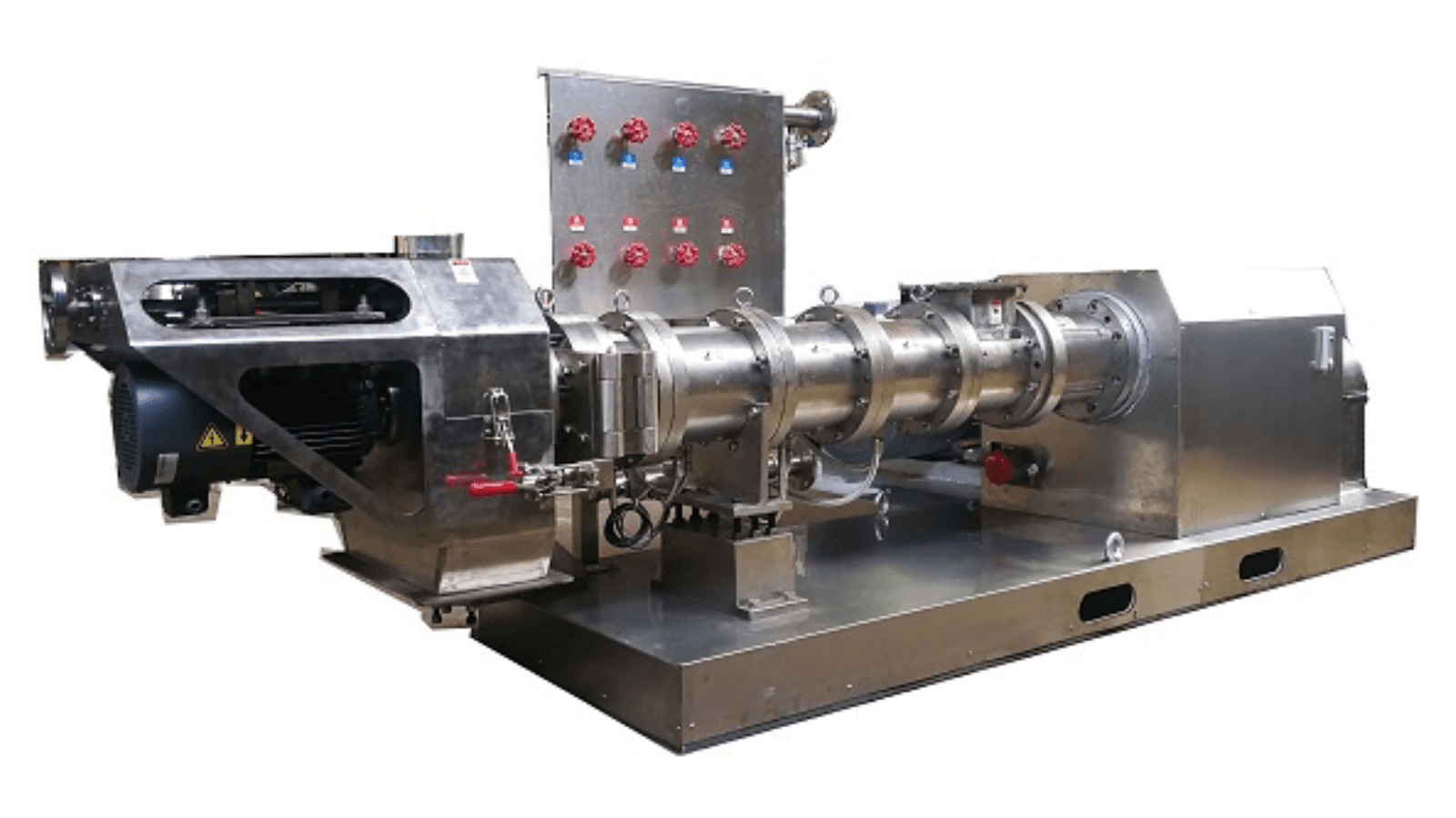
Двухшнековые экструдеры, on the other hand, allow for modular screw arrangements. Whether it’s protein texturization, sugar-starch blends, or functional additives like omega-3s or vitamins, twin-screw machines provide greater thermal and mechanical control—essential for the increasingly complex food formulas in modern markets.
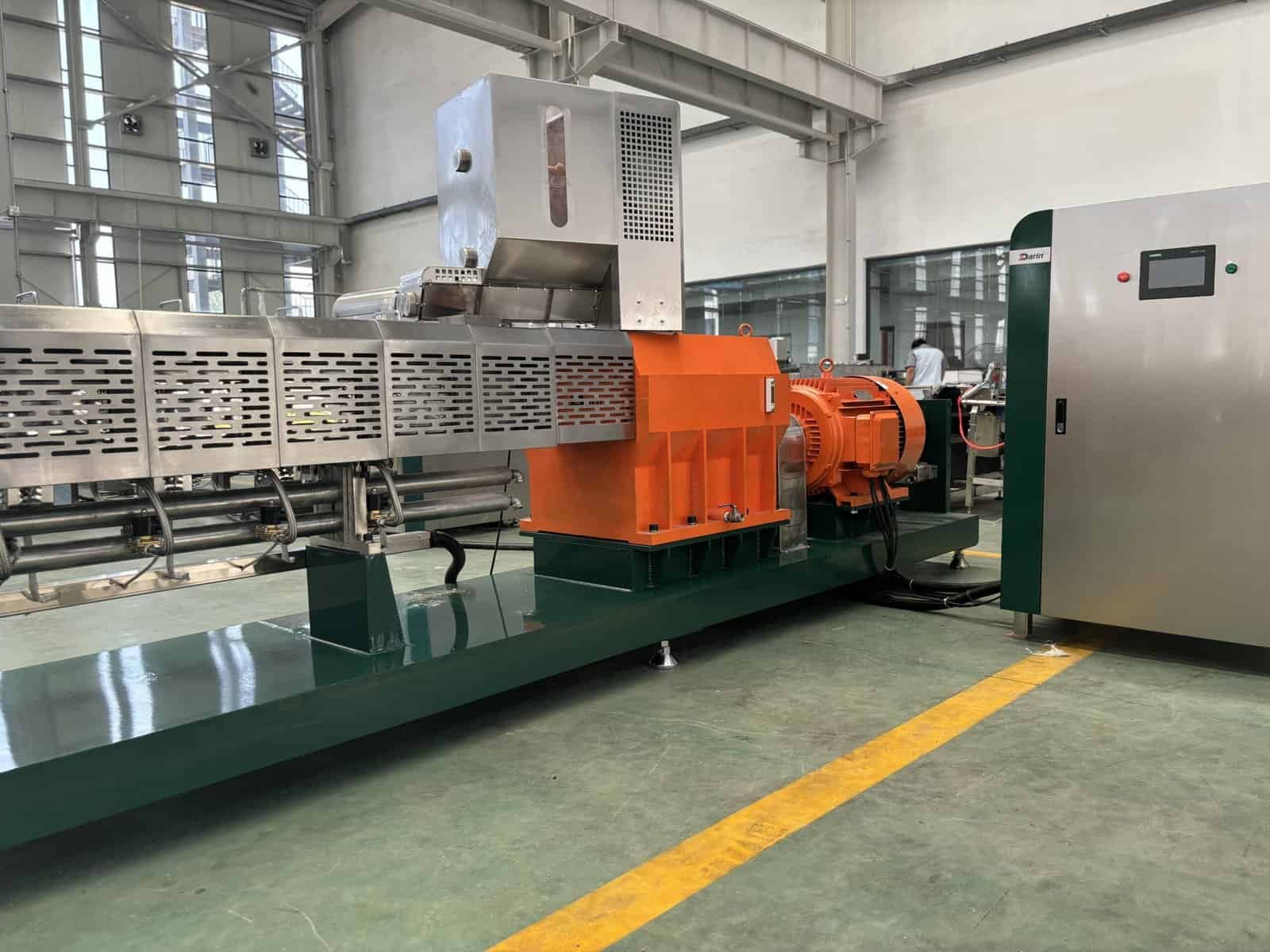
Performance Characteristics in Food Processing
| Параметр | Одношнековый экструдер | Двухшнековый экструдер |
|---|---|---|
| Typical Moisture Handling | 15–25% | 20–70% |
| Ability to Handle Sticky Doughs | Низкий | Высокий |
| Nutrient Retention Efficiency | Умеренный | Высокий |
| Texture Control Flexibility | Низкий | Очень высокий |
| Process Stability | Sensitive to variations | Highly stable and robust |
| Energy Efficiency (kWh/kg) | \~0.18 – 0.30 | \~0.14 – 0.25 |
Single-screw systems are generally less tolerant to ingredient variation, making them better suited for simple products. They tend to rely heavily on consistent feed material and offer limited scope for in-line adjustments.
Twin-screw extruders, however, can be tuned mid-process—adjusting moisture, shear, temperature, and mixing without halting production. This is critical in products like plant-based meats, baby cereals, и high-protein snacks, where ingredient behavior can be unpredictable.
Application Suitability Across Food Categories
| Food Category | Preferred Extruder Type | Reason |
|---|---|---|
| Зерновые завтраки | Двухвинтовой | Better shape control, multiple ingredient feeds |
| Direct-Expanded Snacks | Одновинтовой | Cost-effective, straightforward formulations |
| Textured Vegetable Protein (TVP) | Двухвинтовой | Superior protein alignment and fibrous texture |
| Pasta & Noodles | Одновинтовой | Traditional dough processing, low moisture |
| Nutritional Bars (Inclusions) | Двухвинтовой | Controlled dispersive mixing |
| Корм для домашних животных | Двухвинтовой | Better digestibility and uniform kibble structure |
| Infant Food (Cereals) | Двухвинтовой | Precise nutrient and viscosity control |
Twin-screw extruders are particularly dominant in R\&D settings and innovation-driven product lines, thanks to their screw customization and ability to handle viscous, sticky, or granular feedstocks. This includes meat analogues, enzyme-treated flours, и probiotic-fortified products.
Industrial Example
Client Profile: European snack company seeking to launch a fortified multigrain puff product.
Initial Setup: Single-screw extruder with flour/corn base blend.
Проблема: Uneven puffing, vitamin degradation, and flavor inconsistency.
Решение: Switched to a co-rotating twin-screw extruder with side injection ports for heat-sensitive vitamin blends and upgraded die plates for consistent puff morphology.
Результат:
- Puff volume improved by 38%
- Vitamin retention increased by 55%
- Batch-to-batch texture consistency achieved
Screw Elements in Twin-Screw Food Extrusion
| Screw Element Type | Назначение |
|---|---|
| Conveying Elements | Transport material forward |
| Kneading Blocks | Mix ingredients homogeneously |
| Reverse Conveying Blocks | Create backpressure for cooking |
| Vent Ports | Remove steam or volatiles |
| Shear Locks | Introduce high mechanical energy for reactions |
These elements allow for functional modifications to cooking behaviorтакие как denaturation of proteins, starch gelatinization, caramelization, и Реакции Майяра, making twin-screw systems powerful culinary tools as well as industrial workhorses.
Economic Comparison for Food Producers
| Cost Aspect | Single-Screw Food Extruder | Twin-Screw Food Extruder |
|---|---|---|
| Стоимость машины | Ниже | Выше |
| Maintenance Simplicity | Easy | Требуются квалифицированные операторы |
| Process Flexibility | Низкий | Высокий |
| Универсальность ингредиентов | Ограниченный | Обширный |
| Operational Stability | Умеренный | Высокий |
| Payback Time | Short (for simple products) | Medium (high-margin items) |
В то время как одношнековые экструдеры offer a lower barrier to entry and are optimal for manufacturers focused on a narrow range of standard recipes, the twin-screw option pays off for companies innovating or working with sensitive or fortified foods.
Summary: Which One Should You Choose?
When choosing between a single-screw and twin-screw food extruder, consider the complexity of your formulations, the stability of your ingredients, and your need for texture and quality control. For standardized products like pasta, corn puffs, or simple kibble, single-screw designs offer a cost-effective and reliable solution.
However, if your goals include R\&D flexibility, nutritional enhancements, или textural precision—especially for modern trends like plant-based, Без глютена, или high-protein foods—a twin-screw extruder is your best investment.
Let’s Help You Choose the Right Food Extrusion Line
We specialize in food-grade extrusion systems tailored to your processing requirements, whether you're launching a new product or scaling up production. From pilot plants to full-scale production, we design systems that align with your food safety, throughput, and texture goals.
👉 Contact us now for a tailored recommendation on your food extruder needs!
5. Часто задаваемые вопросы
Q1: What is the main difference between a single-screw and a twin-screw food extruder?
A1: The primary difference lies in the number of screws inside the barrel. Single-screw extruders use one rotating screw, ideal for simpler, lower-shear applications like snack foods or pasta. Twin-screw extruders feature two intermeshing screws, offering better mixing, control, and versatility, making them suitable for complex formulations such as pet food, textured proteins, and high-moisture applications.
Q2: Why choose a twin-screw extruder over a single-screw?
A2: Twin-screw extruders provide superior control over temperature, pressure, and shear, which enables better processing of heat-sensitive, viscous, or multi-phase materials. They're ideal for high-performance food production requiring flexibility, product consistency, and higher throughput.
Q3: Are twin-screw extruders more expensive than single-screw ones?
A3: Yes, twin-screw extruders generally have a higher initial investment due to their complex design and enhanced capabilities. However, they offer long-term value by supporting a broader range of applications, higher yields, and improved quality control, which can offset the cost in commercial production settings.
Q4: Which extruder type is better for producing pet food?
A4: Twin-screw extruders are typically better for pet food manufacturing due to their ability to handle diverse recipes, incorporate high protein or fiber content, and produce uniform textures. Their precise control supports complex formulations and continuous production needs.
Q5: How do maintenance and operation differ between the two extruder types?
A5: Single-screw extruders are simpler to maintain and operate, with fewer moving parts and lower operational costs. Twin-screw extruders, while more complex, offer modular screw designs and self-wiping action, reducing cleaning time and enabling rapid product changeovers in industrial setups.
6. Ссылки
- Типы экструдеров – https://www.sciencedirect.com/topics/engineering/extruder - ScienceDirect
- Twin-Screw vs. Single-Screw Extrusion – https://www.clextral.com/en/technology/extrusion/ - Клекстраль
- Food Extrusion Basics – https://www.ift.org/news-and-publications/food-technology-magazine/issues/2020/july/features/extrusion-cooking – IFT
- Обзор экструзии кормов для домашних животных -. https://www.petfoodindustry.com/articles/11182-understanding-extrusion-technology - Индустрия кормов для домашних животных
- Single-Screw Extruders Explained – https://www.plasticsinsight.com/single-screw-extruder/ – Plastics Insight
- Twin-Screw Processing Guide – https://www.leistritz.com/extrusion-systems/twin-screw-extruders.html – Лейстриц
- Design of Food Extruders – https://www.researchgate.net/publication/327327137_Extrusion_Cooking_Technology - ResearchGate


